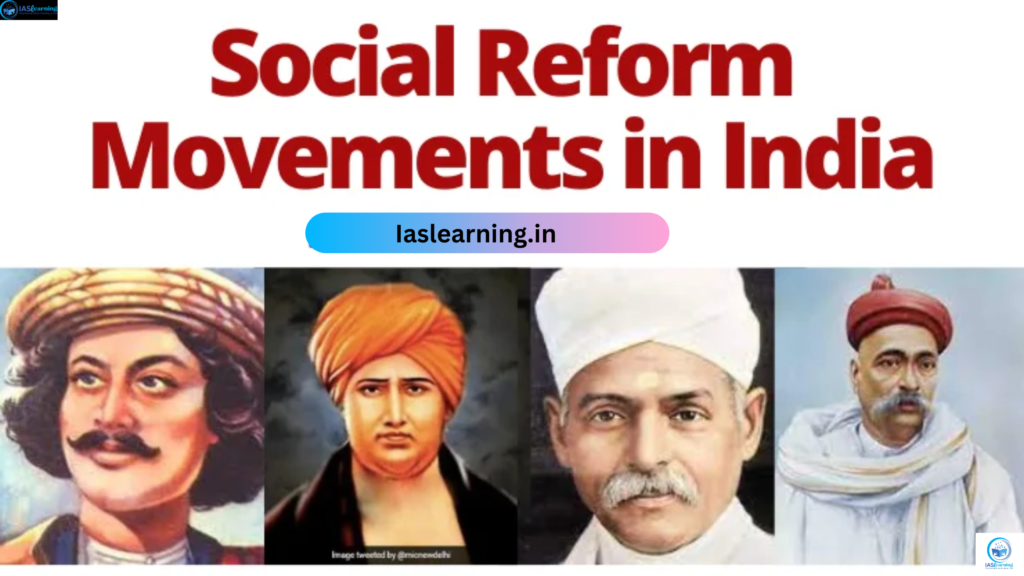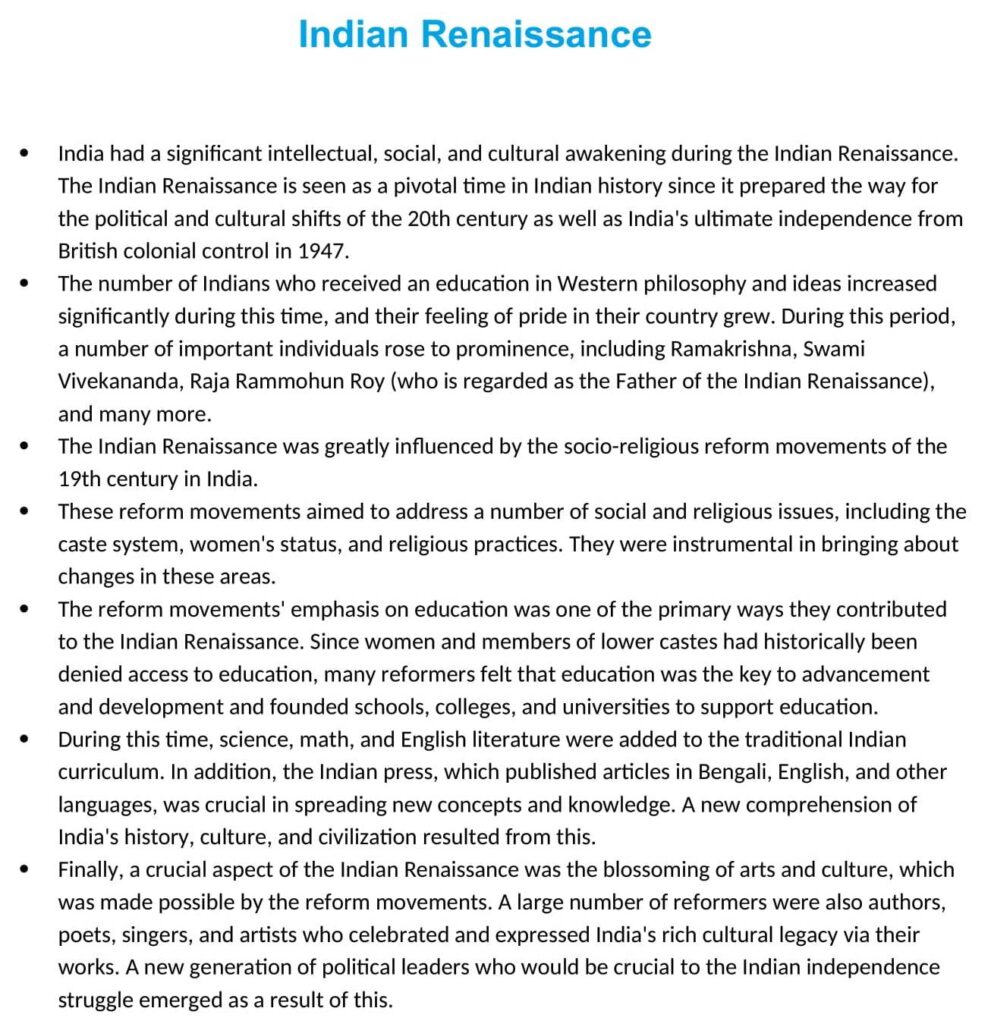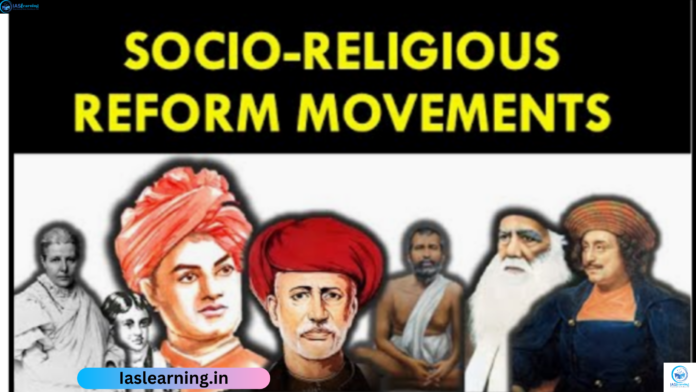Reform Movements
In 19th-century India, attempts were made to modernize and enhance society by addressing social and religious difficulties through socio-religious reform organizations. These movements aimed to declare India’s independence from colonial authority, advance female equality and education, and do away with customs like the caste system.
The Brahmo Samaj, Arya Samaj, Theosophical Society, Gandhi’s nonviolent campaign, the Dalit struggle, and the women’s rights movement are a few of the most significant movements.

Based on their goal, the Reform movements can be broadly classified into:
- Reformist movements: Placed a strong emphasis on the necessity of modernizing and changing the social and religious systems that now govern Indian society. For instance, Prarthana Samaj and Brahma Samaj, etc.
- Movements such as revivalist movements emphasized the need to return to old Indian beliefs and customs, which were thought to be in danger due to Western influence. For example, the Deoband Movement and Arya Samaj.
For more : Ahmedabad Mill Strike: First Hunger Strike,1918

Reasons for the rise of social and religious reform movements (or the Indian Renaissance) in India during the 19th and early 20th centuries:
- Influence of Western ideals and values: With British colonization came the introduction of Western concepts of democracy, equality, and individual rights, which motivated some Indians to consider how their own society may be better.
- Desire to modernize and reform Indian society: Many reformers regarded reform as a means of bringing about progress and development, believing that traditional Indian society was rife with problems and in need of modernity.
- Status of women: They were denied equality and the opportunity for education. In addition, customs like as female infanticide, child marriage, and Sati Pratha further marginalized the status of women.
- Scholars and intellectuals had a significant influence on the Indian Renaissance. They worked to unearth and recover India’s historical roots and were instrumental in the growth of reform organizations. Mrityunjaya Vidyalankar, Ramjay Tarkalankar, and Ram Ram Basu—three Indian intellectuals connected to Fort William College—aided in the development of Bengali writing and made a direct contribution to the Renaissance.
- Impact of missionary work: Especially in areas like Bengal and Maharashtra, Christian missionaries were crucial to the dissemination of Western ideologies and the advancement of education.
- Impact of colonialism and economic transformation: Under British control, there were social and economic upheavals as well as a sense of unhappiness among certain Indians. These changes included the creation of a centralized administration and the growth of contemporary industries.
- Exposure to the outside world: During the latter several decades of the 1800s, nationalistic movements (such as those in Italy and elsewhere) gained momentum worldwide, which served as inspiration for a number of reformers.




